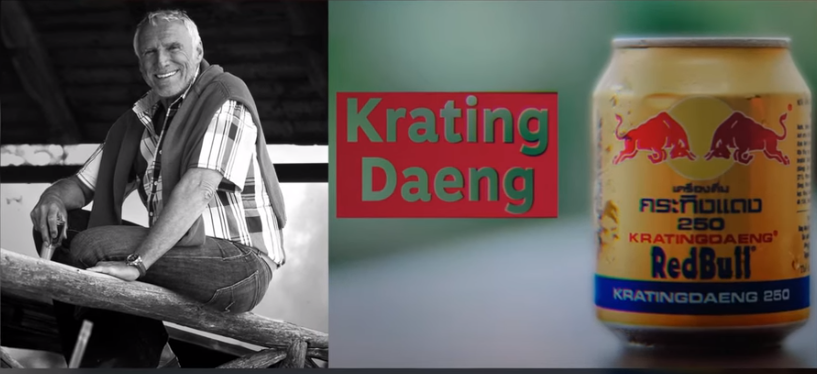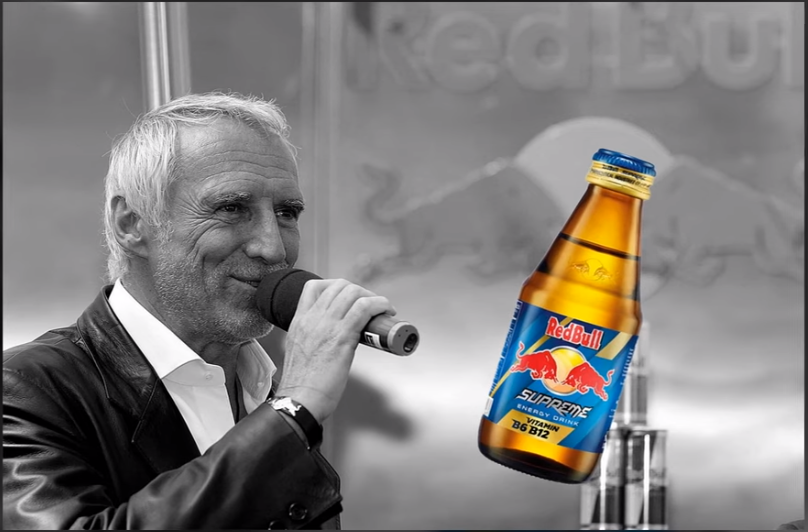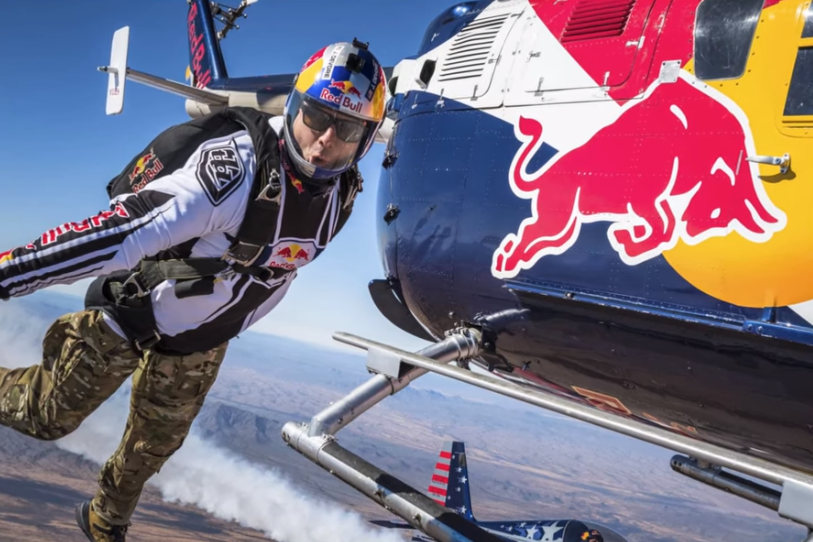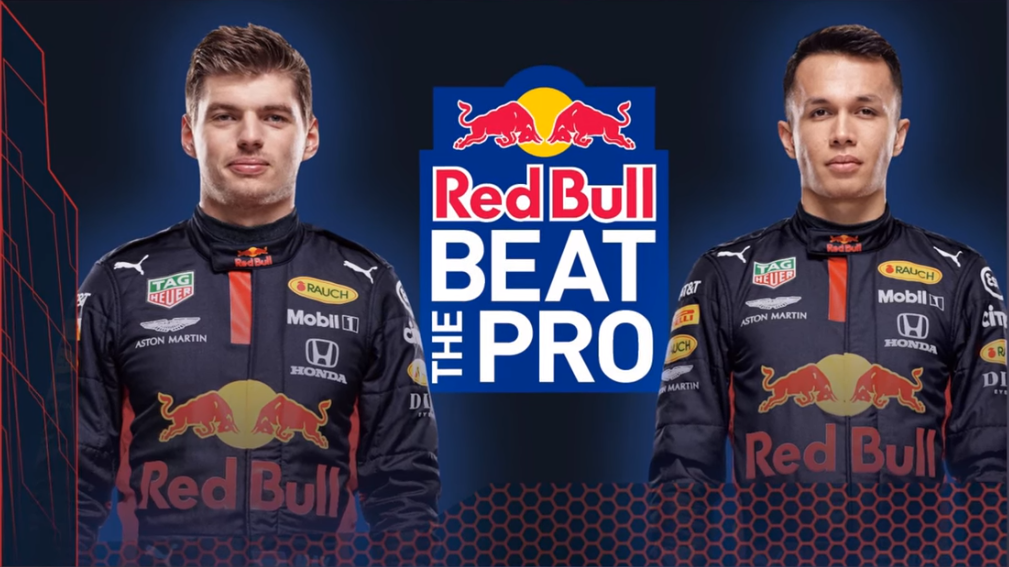In 2019, Red Bull sold an amount of beverage cans equivalent to the world's population. However, the Red Bull empire does not stop at 7.5 billion cans of energy drink. They also own two Formula 1 racing teams, five professional football clubs, one ice hockey team, and sponsor thousands of athletes across various fields. Not to mention that Red Bull also organizes countless exciting sports events such as ice skating challenges, adventure running, and has its own media system. Clearly, Red Bull's business is not just about selling energy drinks. But are all these massive activities just marketing tricks or are they truly money-making ventures?
Where the story begins

The story began in the summer of 1982 when an Austrian entrepreneur experienced motion sickness on a business trip to Thailand. He tried a local drink called krating and was surprised to feel much better; krating, when translated into English, means Red Bull, symbolizing the giant wild ox in Southeast Asia. Convinced by the miraculous effects of krating, he decided to bring this product to the West and create a completely new product category, energy drinks. However, his idea was rejected by Western investors because they did not see the market potential for this product outside of Asia. He understood that the market for his product did not yet exist, so he decided to create it himself.
With a strong belief in his success, he invested half a million US dollars into the project, then partnered with the owner of the krating manufacturer, Mr. Chaleo Yoovidhya, who also agreed to invest the remaining half a million US dollars to establish the company. To suit the taste of European consumers, he adjusted the formula and flavor of krating before officially launching the product in Austria in 1987 under the name Red Bull. Interestingly, the initial ban on Red Bull sales in Germany inadvertently became an effective marketing tactic.
Young Germans were curious to buy this banned energy drink by crossing the border into Austria, leading Red Bull to sell over 1 million cans in its first year. From its initial success in Austria, Red Bull quickly spread throughout Europe, first to Slovakia and Hungary in 1992, then to Germany and the UK in 1994. When Red Bull entered the US market three years later, they achieved impressive sales of over 1 million cans per day; industry giants like Coke and Pepsi, despite having more abundant financial resources, underestimated the strategic vision of Dietrich Mateschitz and the potential of the Red Bull brand.
Unique vision

Dietrich Mateschitz created a unique business model focused on outsourcing activities in the value chain such as production and logistics. This means that Red Bull does not produce the drinks itself but focuses all its resources on branding and sales. Production and canning are entirely outsourced to external partners. Looking at Red Bull's profit margins, it is clear that this strategy has yielded outstanding results.
One of the key factors contributing to Red Bull's success is its ability to price its products much higher than competitors, while the production cost of each Red Bull can was only about 9 cents in 2019. They can sell at many times the price thanks to smart branding and marketing strategies. In 2019, the suggested retail price for a can of Red Bull was $3.59, while major retailers like Walmart and other supermarket chains bought it for $44 to $48 per 24-can case, equivalent to $1.87 per can. Thus, Red Bull sold its product at over 20 times the production cost. To build a market for the still young product.
Dietrich Mateschitz keenly targeted potential customers, particularly young people and students. Red Bull effectively implemented targeted marketing campaigns by using student brand ambassadors, who are dynamic, well-known students sponsored by Red Bull to promote the product on college campuses and organize lively parties. The image of Volkswagen vehicles with giant Red Bull logos carrying many free Red Bull cans appeared everywhere from beaches, schools, gyms to office buildings, quickly attracting the attention of young people.
Red Bull also quickly became popular among bartenders for its unique combination with spirits like Vodka or Jägermeister, creating legendary drinks in bars and nightclubs worldwide, contributing to elevating the Red Bull brand to new heights. However, this was just the beginning for Red Bull's massive marketing machine; by sponsoring and owning sports teams, Red Bull created a deep connection with customers that far exceeded the effectiveness of traditional advertising. The Red Bull logo appeared on Formula 1 racing cars, skateboards, and paragliders, conveying a message of dynamic energy that evokes excitement in consumers.

Instead of boring advertising, Red Bull created unique brand stories, conveying messages naturally and impressively through its own media system. Red Bull wisely retained the image rights to all events they sponsor; in the era of social media explosion, this strategy created a powerful viral effect that significantly increased the effectiveness of marketing campaigns. The most notable example of the success of this strategy is the Red Bull Stratos project in 2012, marked by the spectacular jump from over 39 km by athlete Felix Baumgartner.
Although the investment cost for the project reached $50 million, experts estimate the media value that the event brought to Red Bull was up to $6 billion. Clearly, this was a worthwhile investment in sponsoring such extreme sports events. Combined with on-site product distribution, it helped Red Bull assert its market leadership.
Not just simple marketing activities
In 2019, Red Bull sold 7.5 billion cans, achieving revenue of over $6 billion, while in 2023, according to statistics from Startista, Red Bull sold over 12 billion cans globally, achieving revenue of approximately $11.7 billion. To achieve that success, Red Bull spent as much as one-third of its revenue on marketing activities. However, despite the massive marketing budget, Red Bull's revenue growth rate has been slowing down since 2012. The reason is that Red Bull is almost entirely dependent on a single product, the energy drink. This limits growth potential and could pose a significant risk to Red Bull in the future, especially in the context of increasing awareness of health and nutrition.
Focusing on a product related to health issues such as obesity, insomnia, and diabetes could negatively impact brand image. Therefore, investing in sports teams and producing media content is not just a marketing activity but also Red Bull's effort to diversify its product portfolio and create additional value chains for its core business. By focusing on sports, Red Bull has built a comprehensive entertainment media ecosystem that includes content production, owning sports teams, signing broadcasting agreements, and managing contracts.

The clearest evidence of this strategy is the operational model of the football clubs owned by Red Bull. Owning multiple football clubs gives Red Bull a significant advantage in leveraging synergies, especially in talent development. They have built a comprehensive training system that allows young players to develop their careers sustainably. For example, a player can start their career in Brazil and then move to Europe to play for Red Bull Salzburg in the Austrian national championship.
Once they have accumulated enough experience, this player can join RB Leipzig in Germany for a chance to compete in the prestigious Champions League, and when they reach the end of their career, they can move to New York Red Bulls to finish their career in Major League Soccer (MLS). The New York Red Bulls club also clearly demonstrates how Red Bull uses private equity in sports to create value. In 2006, Red Bull acquired the team for an estimated price of about $25 million. By 2023, according to Forbes estimates, the team's value has increased to $525 million.
Thus, Red Bull has increased its initial investment in the New York Red Bulls by 20 times. With the strong growth of the US football market, the value of this team is expected to continue to rise in the future. But currently, Red Bull's revenue still mainly comes from its beverage business. Therefore, Red Bull views investments in sports as a long-term brand investment, implicitly acknowledging that they have not yet generated significant profits, at least up to this point.
